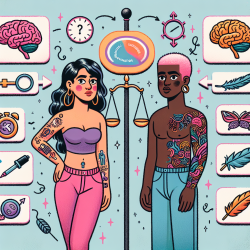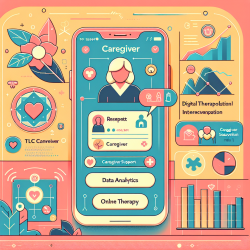Introduction
Understanding the intricacies of gender identity expression and body modification in adolescents is crucial for practitioners aiming to provide effective and ethical care. The research article "Adolescents and Body Modification for Gender Identity Expression" by Timothy F. Murphy offers valuable insights into the ethical, legal, and clinical considerations involved in supporting adolescents with atypical gender identities. This blog post aims to distill key findings from the research to help practitioners improve their skills and encourage further exploration in this field.
Key Findings from the Research
The research highlights several important aspects of body modification for gender identity expression in adolescents:
- Respect for Decision-Making: The degree of respect owed to minors regarding body modifications should be scaled according to their decision-making capacities, within the context of robust informed consent practices.
- Informed Consent: Informed consent should involve a comprehensive understanding of the nature and significance of body modifications, including potential risks and benefits.
- Fertility Preservation: Body modifications can impact fertility, and it is essential to discuss fertility preservation options with adolescents and their families.
- Legal and Ethical Considerations: The research underscores the need for a nuanced approach to legal and ethical issues, considering the emerging capacities of adolescents to make informed decisions.
Implementing Research Outcomes in Practice
Practitioners can enhance their skills by integrating the research findings into their practice:
- Conduct Thorough Assessments: Evaluate the decision-making capacities of adolescents on a case-by-case basis, considering their understanding, appreciation, and reasoning abilities.
- Facilitate Informed Consent: Ensure that adolescents and their families are fully informed about the potential outcomes of body modifications, including irreversible changes and fertility implications.
- Promote Collaborative Decision-Making: Encourage open communication among adolescents, their families, and the treatment team to support shared decision-making processes.
- Stay Informed: Continuously update your knowledge on the latest research and guidelines related to gender identity and body modification to provide evidence-based care.
Encouraging Further Research
While the research provides a solid foundation, there is a need for further exploration to address gaps in knowledge and improve clinical practices. Practitioners are encouraged to engage in research activities, collaborate with researchers, and contribute to the growing body of evidence in this field.
Conclusion
By implementing the outcomes of the research on adolescents and body modification for gender identity expression, practitioners can enhance their skills and provide more effective and ethical care. Emphasizing informed consent, decision-making capacities, and collaborative approaches will lead to better outcomes for adolescents exploring their gender identities.
To read the original research paper, please follow this link: Adolescents and Body Modification for Gender Identity Expression.










